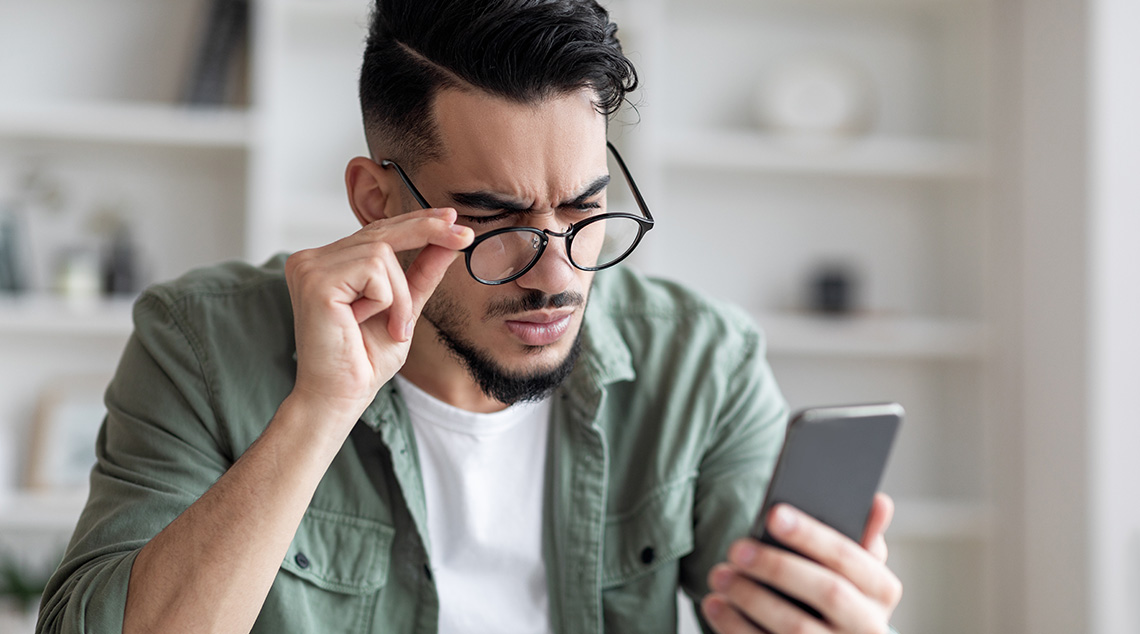Are we seeing a nearsightedness epidemic?
More than six million Australians report being near-sighted as experts insist we urgently need to open our eyes to the growing problem.
Cases of nearsightedness – also known as myopia, or short-sightedness – have skyrocketed in recent decades, particularly among children.
The dramatic rise in myopia has prompted ophthalmology researchers to predict more than half the world’s population will require glasses by 2050.
“Near-sightedness, or myopia, is a common vision condition where distant objects appear blurry while close objects are seen clearly,” Optometrist Warehouse managing director Peter Larsen explains.
“This occurs when the eye is too long or the cornea has too much curvature, causing light to focus in front of the retina rather than on it.”
Why is nearsightedness on the rise?
Risk of myopia can be influenced by both genetics and environment.
“Children with one or both myopic parents are at higher risk,” Peter says.
“Environmental influences include extensive ‘near work’ such as reading, using computers and smartphones, and insufficient time spent outdoors.”
It is these environmental factors that are driving the uptick in nearsightedness – especially among kids, Peter says, adding that experts attribute this rise to lifestyle changes such as increased screen time and indoor activities, “which place more strain on the eyes and reduce exposure to natural light.”
The rise in myopia among young children and adolescents is particularly concerning as it can progress and become worse in adulthood, Peter notes.
“With high myopia, there is a greater risk of retinal detachments and glaucoma, so it is important that every effort is made to both detect and manage it to hopefully reduce progression,” he says.
Signs of nearsightedness
- Difficulty seeing distant objects clearly
- Squinting or eye strain
- Frequent headaches
- Needing to sit closer to the TV or classroom board to see clearly
- Holding books or screens very close to the face
Will I need glasses if I’m near-sighted?
Peter says not everyone with myopia will necessarily need glasses.
“The need for glasses depends on the severity of myopia and individual lifestyle needs.
“Some people may require glasses only for specific activities, like driving or watching television, while others may need them more consistently.”
How is nearsightedness treated?
Peter says early vision testing and intervention are crucial to prevent the condition from worsening and, from there, your optometrist can recommend a management plan to suit your needs.
There are several options for managing myopia, including:
Prescription lenses
“Lenses such as multifocal or myopia-control glasses are designed to reduce eye strain and control the progression of myopia by altering the focus of light entering the eye,” Peter says.
Refractive surgery
Laser refractive surgery including LASIK can improve or correct myopia.
Low-dose atropine eye drops
“These have been proven effective in slowing the progression of myopia in children,” Peter says.
“They are typically used in very low concentrations and can significantly reduce the rate of myopia progression with minimal side effects.”
Contact lenses
“There are specialised contact lenses designed to slow the progression to help manage myopia effectively,” Peter says.
Can we stop myopia from increasing?
Peter says the best way to stem the flow of people being diagnosed with myopia is taking a holistic approach to understanding its causes, recognising the signs early and utilising the latest treatments and preventative measures.
“By promoting outdoor activities, managing screen time and leveraging advanced treatment options like low-dose atropine drops and specialised lenses, we can slow the progression of myopia and protect vision health in children and adolescents,” he says.
More on vision and eye health:
- 4 simple ways to protect your eyesight
- How to choose the perfect sunglasses for you
- 10 veggies that will boost your eye health
- ‘It started with a headache … then I lost most vision in one eye’
- How to protect your child’s eyesight in the high tech age
Written by Claire Burke.





